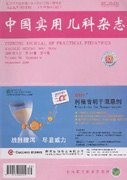Hypertrophic cardiomyopathy(HCM) is the second commonest cardiac muscle disease affecting children and adolescents and is a leading cause of sudden death in young athletes. HCM is highly heterogeneous in pediatric population,and currently the precision diagnosis of the etiology of the disease faces enormous challenges. In addition,prospective and randomized controlled clinical studies in the diagnosis,treatment and prognosis of pediatric HCM are extremely rare. Evidence-based consensus or guidelines needs to be developed urgently for personalized risk assessment and treatment,as well as standardized family management and genetic counseling.

